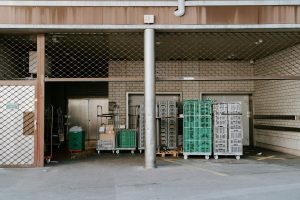Understanding Oven Functions: Broil, Bake, and Roast Defined
When cooking with an oven, most of us are familiar with the basic functions of baking and broiling. However, there is another essential function that often goes overlooked – roasting. Understanding the differences and capabilities of broiling, baking, and roasting can greatly improve your cooking techniques and elevate your meals. In this article, we will dive into the world of oven functions and define the ins and outs of broil, bake, and roast. So, let’s get cooking!
The Basics of Baking
Baking, also known as conventional cooking, is the most common oven function. It involves cooking food by surrounding it with hot air, which produces consistent and even heat distribution. Baking is typically done at lower temperatures, ranging from 350°F to 400°F, and is ideal for cooking items such as cakes, cookies, bread, and casseroles. For baking, it is recommended to use the center rack to ensure even heat distribution and prevent burning on the top or bottom.
Tips for Baking:
• Preheat your oven for at least 10-15 minutes before putting in your food. This will ensure that the oven is at the correct temperature for even cooking.
• Use aluminum foil or parchment paper to line your baking sheets or pans for easy clean-up.
• Avoid opening the oven door frequently as it can cause fluctuations in temperature and lead to uneven baking.
• Use a baking thermometer to check for the internal temperature of your food for accuracy and doneness.
The Power of Broiling
Broiling is another common oven function that involves cooking food under direct heat from the top heating element. Unlike baking, broiling uses high temperatures, typically around 500°F, to cook food quickly. Broiling is perfect for achieving a crispy exterior while still keeping the inside of the food tender and juicy. It is ideal for cooking meats, vegetables, and even desserts such as crème brûlée.
Tips for Broiling:
• Position your oven rack on the highest level to ensure the food is close enough to the heating element for proper cooking.
• Use a broiling pan or line your baking sheet with aluminum foil to catch drippings and prevent a mess.
• Season and marinate your food before broiling for added flavor.
• Keep a close eye on your food as it can quickly go from perfectly crispy to burnt if left unattended.
The Versatility of Roasting
Roasting, also known as convection cooking, is similar to baking but with the added bonus of a fan that circulates hot air throughout the oven. This ensures even heat distribution and faster cooking times. Roasting is typically done at lower temperatures, similar to baking, but can also be done at higher temperatures for a crispy exterior. It is perfect for cooking meats, vegetables, and even fruits.
Tips for Roasting:
• Use a roasting pan or baking sheet with raised edges to catch any drippings and prevent a mess.
• Preheat your oven before roasting for consistent and even cooking.
• To achieve a crispy exterior, leave the fan on for the entire cooking time. To avoid over browning, turn the fan off towards the end of cooking.
• Use a meat thermometer to check for the internal temperature of your food for accuracy and doneness.
Which Function Should You Use?
Now that we have covered the basics of broiling, baking, and roasting, you may wonder when to use each function. Well, it depends on the type of food you are cooking and the desired outcome.
If you want a crispy exterior, broiling would be your best bet. For evenly cooked and tender foods, baking would be the way to go. If you want faster cooking times and a crispy exterior, roasting would be the ideal choice. However, don’t be afraid to experiment and see which function works best for your specific recipes and preferences.
Conclusion
In conclusion, understanding the different oven functions and their capabilities can greatly improve your cooking skills and elevate your meals. Baking, broiling, and roasting all have their own unique qualities that make them essential functions to have in your culinary repertoire. So, the next time you are in the kitchen, don’t be afraid to switch up your oven function and take your dishes to the next level.











